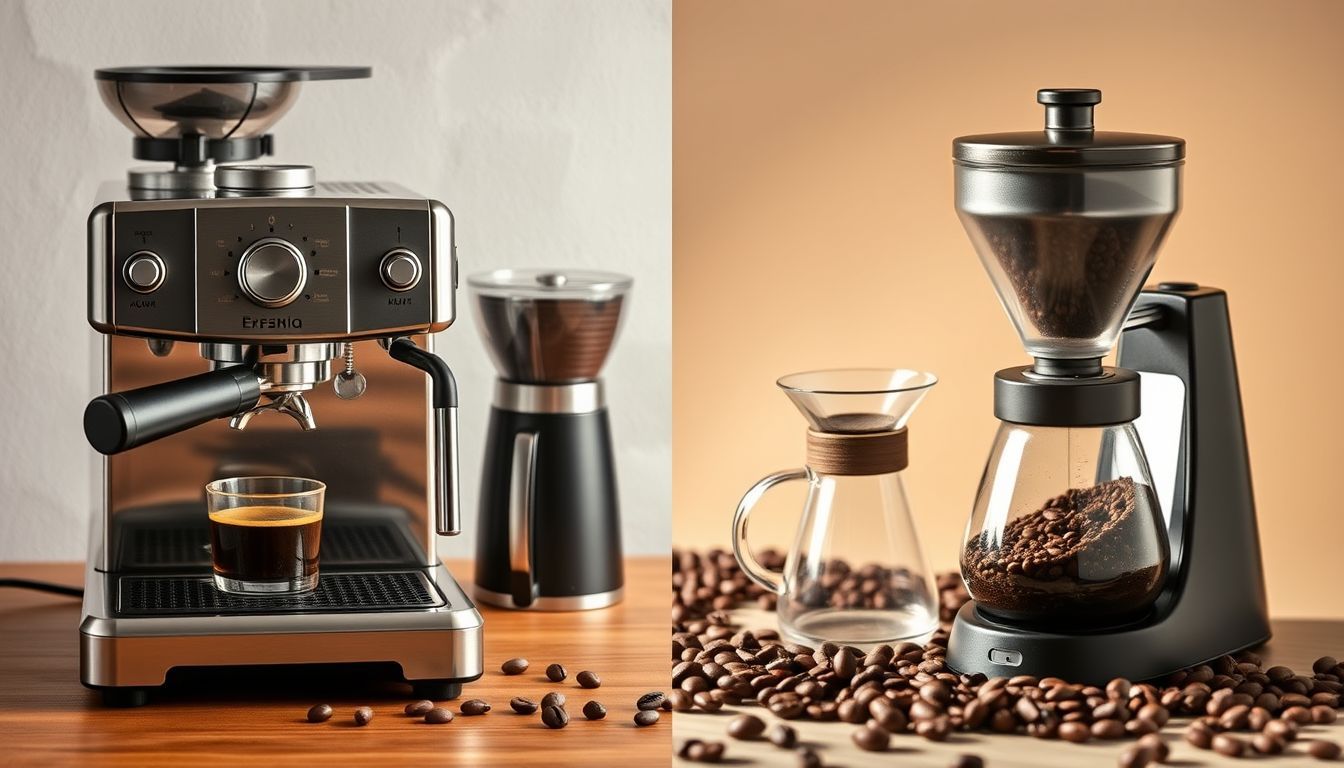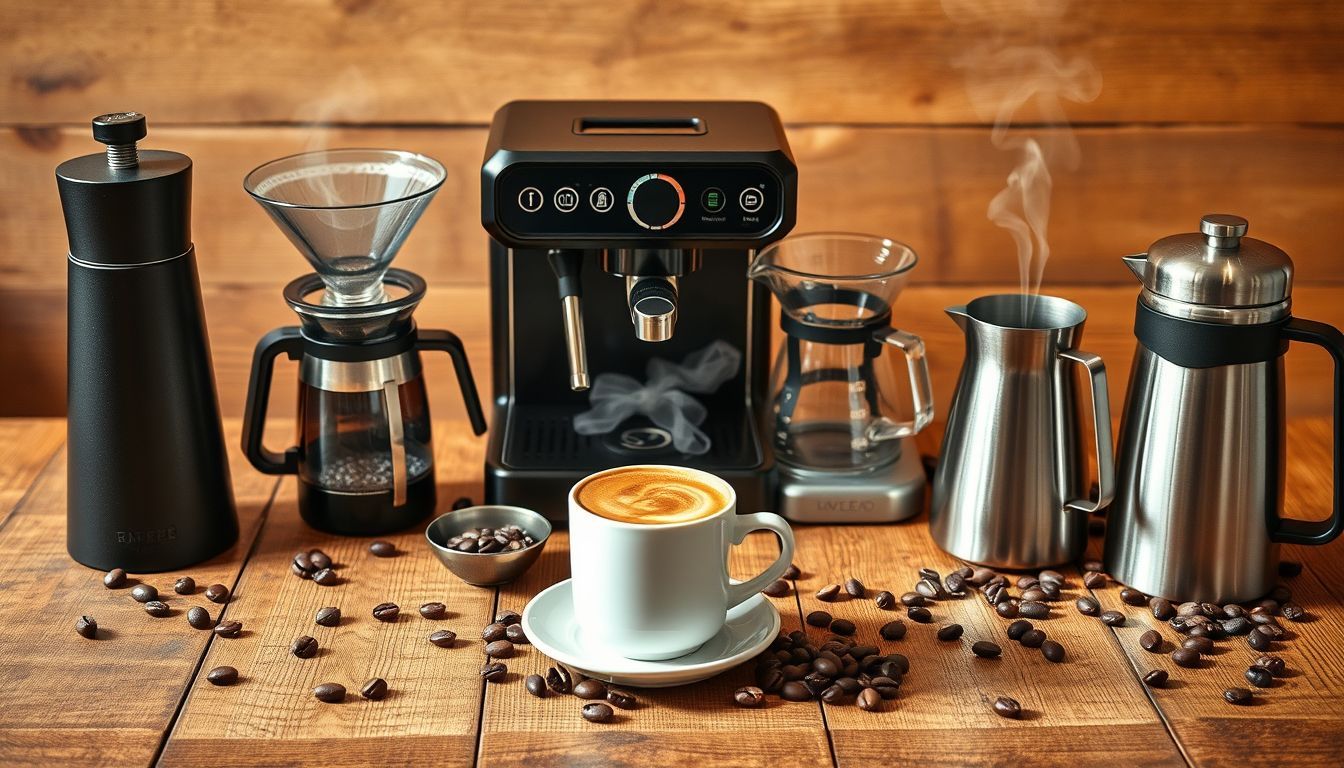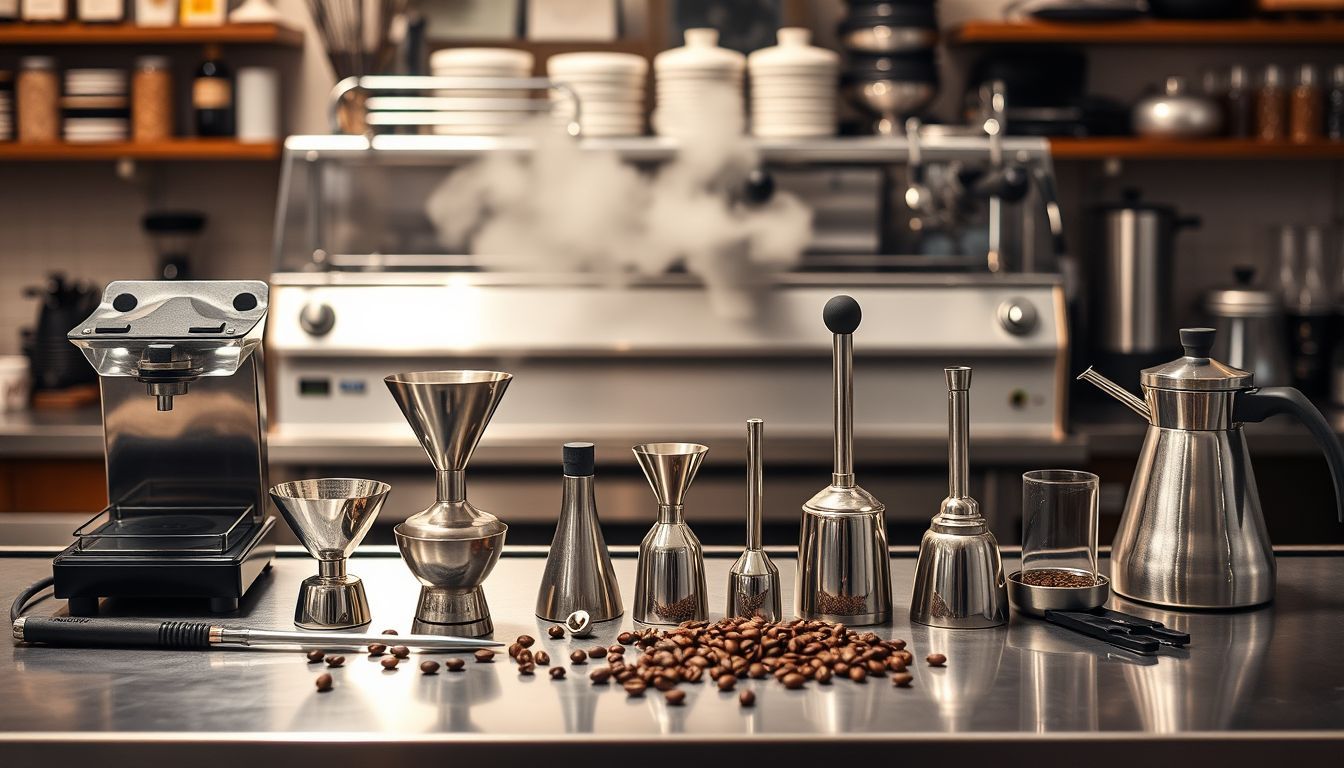The Truth About Expensive vs Cheap Coffee Equipment: When to Splurge and When to Save
Coffee gear pricing can be bewildering. I'll decode when premium equipment actually matters and when you're just paying for fancy branding.

Amazon Affiliate Disclosure
This post contains affiliate links. If you purchase through these links, we may earn a small commission at no additional cost to you.
Let me start with a confession: I once spent three months drinking terrible coffee from a $2,000 espresso machine while my $30 French press sat unused in the cabinet. The expensive machine looked gorgeous on my counter, but I hadn't learned how to use it properly. Meanwhile, that humble French press had been delivering consistently excellent coffee for years.
This experience taught me something crucial about coffee equipment: price doesn't always correlate with the quality of coffee in your cup. Sometimes it does, sometimes it absolutely doesn't, and knowing the difference can save you hundreds (or thousands) of dollars while actually improving your daily brew.
The Psychology of Coffee Equipment Pricing
Before we dive into specific equipment categories, let's address the elephant in the room: why coffee gear pricing seems so arbitrary. You'll find French presses ranging from $15 to $300, grinders from $20 to $3,000, and don't even get me started on espresso machines.
The truth is, coffee equipment pricing reflects several factors beyond just performance:
- Materials and build quality
- Brand prestige and marketing
- Manufacturing volume and location
- Research and development costs
- Target market positioning
Understanding these factors helps you identify when you're paying for actual improvements versus when you're funding someone's yacht.
Grinders: Where Money Actually Matters
The Non-Negotiable Investment
If I had to choose one piece of equipment to splurge on, it would be a grinder. Here's why: coffee extraction is fundamentally about surface area, and grind consistency directly impacts how evenly water extracts flavors from your beans. I rely on the Baratza Encore Conical Burr Coffee Grinder (https://amazon.com/dp/B007F183LK?tag=coffeelogik-20) to deliver uniformly sized grounds day after day.
A cheap blade grinder produces particles ranging from powder to small rocks. This means some coffee over-extracts (bitter), some under-extracts (sour), and you end up with a muddled mess regardless of how expensive your beans were.
The Sweet Spot: $150–$300
You don't need to spend $1,500 on a grinder to get excellent results. The sweet spot for home users typically falls between $150–$300 for burr grinders that deliver:
- Consistent particle size
- Minimal heat generation
- Adjustable grind settings
- Reasonable durability
Beyond this range, you're often paying for commercial-grade durability, exotic materials, or incremental improvements that most home users won't notice.
When Cheap Works
The exception? If you're only making cold brew or French press, a decent blade grinder can suffice since these methods are more forgiving of grind inconsistency. But even then, swapping in a burr model will noticeably improve your results.
Brewing Equipment: The Great Equalizer
French Press: Peak Diminishing Returns
A French press is essentially a glass cylinder with a metal filter. Once you have borosilicate glass and a fine mesh filter, spending more money typically gets you:
- Fancier materials (copper, premium steel)
- Better insulation
- Slightly improved filter design
- Brand prestige
If you want a step up without breaking the bank, consider the Bodum 34 oz Brazil French Press Coffee Maker (https://amazon.com/dp/B000KEM4TQ?tag=coffeelogik-20), which pairs durable borosilicate glass with a reusable stainless filter—yet still falls well within the $25–$50 sweet spot.
Pour-Over Devices: Function Over Form
The V60, Chemex, and similar pour-over devices are marvels of simplicity. The expensive versions don't brew better coffee than the basic ones – they just look prettier doing it.
A $8 plastic V60 will produce identical coffee to a $40 ceramic one, assuming you use the same technique. For a balance of heat retention and aesthetics, the Hario V60 Ceramic Coffee Dripper (https://amazon.com/dp/B000P4D5HG?tag=coffeelogik-20) is a popular choice. It holds heat better than its plastic counterpart and delivers the same clean cup.
Espresso Machines: The Wild West
Espresso machines represent the most confusing segment of coffee equipment pricing. You'll find machines at every price point from $100 to $10,000+, and the relationship between price and performance is… complicated.
Entry Level ($100–$300): Manage Expectations
Machines in this range typically use pressurized portafilters and steam wands that barely deserve the name. They can make coffee that resembles espresso, but don't expect café-quality results.
Sweet Spot ($400–$800): Real Espresso Begins
This range offers machines with:
- Proper 9-bar pressure pumps
- Temperature stability
- Non-pressurized portafilters
- Functional steam wands
A standout in this category is the Breville Barista Express Espresso Machine BES870XL (https://amazon.com/dp/B00CH9QWOU?tag=coffeelogik-20), which integrates a conical burr grinder, PID temperature control, and a compact footprint—all for under $800.
High-End ($1,000+): For Enthusiasts Only
Expensive machines offer features like:
- Dual boilers
- PID temperature control
- Pressure profiling
- Commercial-grade components
These features can improve your espresso, but they require skill and dedication to utilize effectively.
Scales and Thermometers: Precision on a Budget
Digital Scales: Accuracy Doesn't Cost Much
A good coffee scale needs to:
- Measure to 0.1 g accuracy
- Have a timer function
- Respond quickly to weight changes
- Fit your brewing setup
You can find scales meeting these criteria for $25–$50. My go-to is the Fuzion Mini Coffee Scale with Timer (https://amazon.com/dp/B0DGTN5QS6?tag=coffeelogik-20). It’s rechargeable, accurate to 0.1 g, and includes flow-rate and shot-timing modes—yet it costs less than $40.
Thermometers: Simple Solutions Win
Water temperature matters for extraction, but you don't need a $100 thermometer. A basic instant-read thermometer ($15–$25) or even learning to judge temperature by timing after boiling works perfectly well.
The Hidden Costs of Cheap Equipment
Durability and Replacement Costs
Sometimes cheap equipment costs more in the long run. A $20 grinder that breaks after six months isn't a bargain. When evaluating budget options, consider:
- Warranty coverage
- Availability of replacement parts
- Brand reputation for durability
- User reviews focusing on longevity
The Frustration Factor
Inconsistent equipment can kill your enthusiasm for coffee. If your grinder produces different results every day or your espresso machine has unpredictable temperature swings, you'll spend more time troubleshooting than enjoying coffee.
When to Splurge: The Strategic Approach
Identify Your Limiting Factor
Before upgrading any equipment, honestly assess what's limiting your coffee quality:
- Beans: Are you using fresh, quality coffee?
- Grinder: Is your grind consistent?
- Technique: Do you understand your brewing method?
- Water: Are you using good water at the right temperature?
- Equipment: Is your brewing device the actual limitation?
Upgrading equipment should come after addressing the first four factors.
The 80/20 Rule
In most cases, 80% of your coffee quality comes from:
- Fresh, quality beans
- Proper grind size and consistency
- Correct ratios
- Appropriate water temperature
- Good technique
The remaining 20% comes from equipment refinements, exotic brewing methods, and perfectionist adjustments.
My Practical Recommendations
The Budget-Conscious Setup ($150 total)
- Burr grinder: $80–$100
- Pour-over dripper: $15–$25
- Digital scale: $25–$35
- Basic thermometer: $10–$15
The Enthusiast Setup ($500–$700)
- Quality burr grinder: $200–$300
- Multiple brewing devices: $50–$100
- Precision scale with timer: $25–$40
- Entry-level espresso machine: $400–$600
The No-Compromise Setup ($1,500+)
- Premium grinder with stepless adjustment
- High-end espresso machine with temperature control
- Multiple specialized brewing devices
- Professional-grade accessories
The Bottom Line: Value Over Vanity
After analyzing hundreds of pieces of coffee equipment, here's what I've learned: the most expensive option is rarely the best value, but the cheapest option often creates more problems than it solves.
The sweet spot for most coffee equipment falls in the middle range – products that prioritize function over form, deliver consistent results, and don’t break the bank or your spirit.
Remember, the best coffee equipment is the gear you’ll actually use consistently. A simple setup that you understand and enjoy will always produce better coffee than complicated equipment gathering dust.
Invest in understanding your coffee and technique first, then upgrade equipment strategically. Your taste buds (and wallet) will thank you.
What’s your experience with coffee equipment pricing? Have you found any surprising gems in the budget category, or splurges that were absolutely worth it? Share your thoughts – I’m always curious about real-world experiences with gear.

Sofia Rossi
I started my career in a world of spreadsheets and boardrooms, but I quickly realized the most interesting data was in the way people interacted when the pressure was on. My novels are my way of analyzing the human heart—the messy, complicated, and often hilarious parts. I write about the lives we lead now, with all the love, ambition, and absurdity that comes with it.


